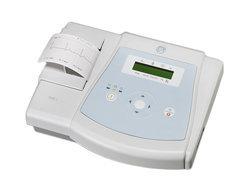Emergency Management for Cardiac Arrest

A cardiac arrest occurs when the heart stops functioning all of a sudden. This usually results in loss of blood circulation throughout the body. Here are a few signs to watch out for if you suspect that someone is experiencing a cardiac arrest-
• Loss of responsiveness- A person suffering from cardiac arrest isn’t able to respond even when you tap or him or ask loudly if he is ok. The person isn’t able to respond in any manner, be it while speaking, moving or blinking.
• Abnormal breathing- The person isn’t able to breathe properly and is gasping for air.
• Pale skin- The skin of the person turns pale when he is experiencing a cardiac arrest.
Diagnosis Of Cardiac Arrest
Investigation of cardiac arrest usually involves a series of tests to identify the cause, and thus identify that may help to prevent cardiac arrest in the future. Some of these tests include electrocardiogram, blood tests, chest X-rays, echocardiogram, nuclear scans, angiogram, ejection fraction testing etc.
Emergency Management
An immediate action is required to deal with a sudden cardiac arrest. The first thing you must do is to call an ambulance. CPR is critical to treating the arrest. It helps maintain the blood flow to the vital organs of the body. Here are the steps to do a CPR-
• Find out if the person is conscious or unconscious. In case of latter, shake and tap on his shoulder and ask if he is ok? Also, check the breath of the person.
• Begin by compressing the chest by keeping the hand in the center of the chest, covered by another hand. Using your body weight, keep pushing hard and fast while keeping your elbows straight, at the same time. Do it at a rate of 100 to 120 compressions per minute. In the case of a child, using one hand is sufficient.
• To open up the airway of the person, you must gently lift the chin up and tilt the head of the person, taking no more than 10 seconds. If the person regains normal breath, then well and good otherwise giving two rescue breaths is advisable. Do so by shutting the nostrils. If the chest doesn’t rise in the first rescue breath, go for the second breath. If you see no movement in the chest even this time, repeat the head tilt process. There are a variety of venturi masks online that doctors usually use to help a patient get enough oxygen flowing through his body and regulate breathing.
• Continue CPR until the person becomes conscious again or until emergency help arrives.
Using an AED or defibrillator is also highly recommended. ECG is the most effective method to detect the functioning of the heart. Moreover, ECG machine price in India isn’t that much. Hence, getting an ECG done shouldn’t be a big task. Remember prompt medical help is crucial to improve the chances of survival and reduce the heart muscle damage.
Post Your Ad Here

Comments